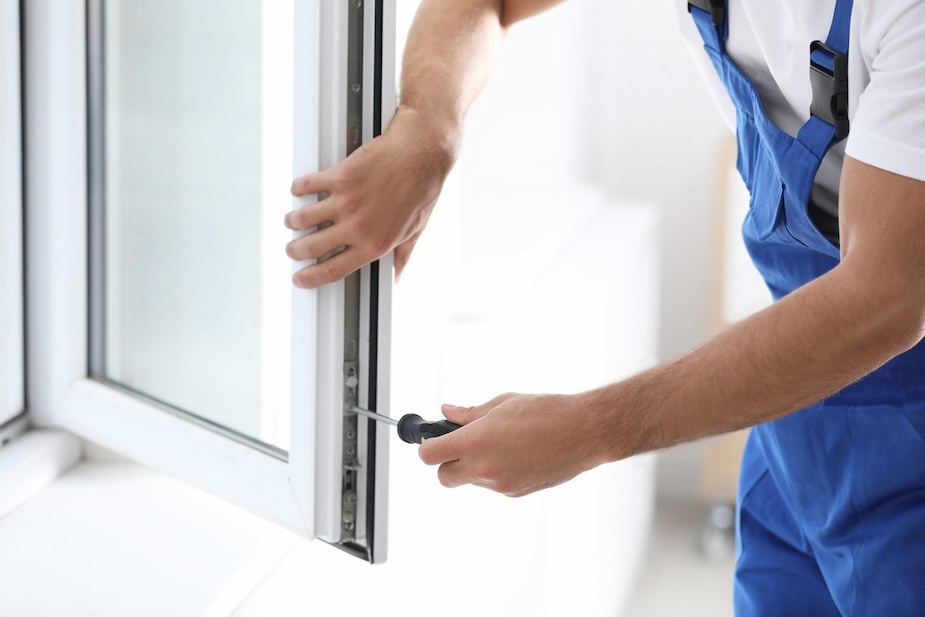You'll Be Unable To Guess Upvc Door Locking Mechanism Replacement's Be…
페이지 정보

본문
 upvc door locking mechanism replacement lock for upvc door; simply click the next internet page, - DIY Or Call in a Professional?
upvc door locking mechanism replacement lock for upvc door; simply click the next internet page, - DIY Or Call in a Professional?The door lock made of upvc is a vital element of security for your home. It can be difficult to gain entry into your home when the lock is damaged or has stopped working.
It is simple to replace a multipoint locking mechanism on a upvc door. It is recommended that you purchase a new lock from the same manufacturer in order cost to replace upvc door lock mechanism ensure it fits.
Fixing a stuck locking cylinder
A well-functioning door lock can help keep your home and its contents secure. It can be a nuisance and even dangerous when a door lock malfunctions. However, there are some simple steps you can follow to solve the issue. If the cylinder is stuck, you can use a lubricant to loosen it. You can now open and close uPVC door without having to worry about the security of your home.
The first step is to identify the uPVC door lock that you have. It will have markings that indicate the brand name or serial number. You can also take off the handle to inspect the cylinder. Once you are aware of the type of cylinder it is and what it is, you can replace the cylinder.
A gearbox that is not working properly can cause it to be difficult to push the handle down. This could be because of wear and tear or damage. A professional locksmith can solve this issue for you.
You should also inspect your uPVC doors and windows for signs of wear. This will ensure that you have a secure and functional door, and it will be more easy to spot issues before they become more serious. This will stop you from having to spend money on costly repairs in the future.
Before beginning any repairs, it's a good idea to review the manufacturer's guidelines and gather the necessary tools. This will allow you to know how the system operates and will make the process of repair much simpler. You may require tools like a screwdriver, wrench, drill and hammer. It's also important to wear work gloves to protect yourself from injuries caused by sharp edges.
You should also check the cylinder prior to finishing. You can test it by inserting the key, then turning it. Make sure the tongue is properly inserted into the cylinder and that the key is compatible with the door you want to. You can use a spirit-level to check the alignment of the cylinder with respect to the hinges.
It can be a bit daunting to change your uPVC locking mechanism at first, but you can do it without the help of a locksmith. It is important to examine the handle and cylinder after you've replaced your uPVC locks.
Adjusting the Keep
Anyone who has basic DIY handyman skills can do this job. If you're not experienced in this kind of work, it's recommended that you hire an expert locksmith to do the work for you. This will allow you to get the results you want, and avoid unnecessary damage to the door's frame or frame.
The first thing you should do prior to beginning the repair process is to consult the manual provided by your manufacturer for any specific instructions to the lock you have installed. uPVC door lock. It is also important to gather the necessary tools and materials needed to finish the task. Put a block of wood or a doorstop underneath your door so that it is sturdy during your work.
Depending on the reason depending on the cause, you may need to remove a piece of the hardware on your door to examine the mechanism. In this case, it is important that you use an approved lubricant by the manufacturer. The lubricant you choose to use should not attract dirt or dust. It is recommended to oil your door's hinges every six months, or sooner if they appear to be becoming stiff.
There are many reasons your uPVC door might be sticking. One reason is that it may be out of alignment with the hinges. This is more frequent for doors that are older. Another reason could be weather changes that could cause the door to expand or contract. This can put strain on the lock, which causes it to become stuck.
It could be that the gearbox is malfunctioning when the handle doesn't lift the latch to lock the doors. It's an easy fix for most homes. This is not a solution for doors that were kicked or hit, as the uPVC handles aren't likely to be able lift such a force.
A good way to check whether the issue is related to the gearbox is by opening the door with a key, and then observe how high the handle rises relative to the hinge. If the gap between the hinge and the handle is too large, it could be a sign of a worn or damaged gearbox.
Replace the lever or handle
The replacement locking mechanism for upvc doors of your door lock made of upvc might seem like a daunting task at first but it's not as difficult as you may think. Utilizing simple tools and the right information will allow you to finish the task in a matter of minutes. You could also save money by completing the job yourself rather than hiring a locksmith professional. The main question is: Do it yourself or hire an expert? Doing it yourself can be a great way to save cash and learn new skills however if it turns into Thor's hammer meeting Ragnarok then it's better to delegate the task to a professional.
If the handle on your door made of upvc is sloppy or loose after the key is inserted it is an indication that internal mechanisms have begun to fail. Often this is due to the gearbox breaking down. It can be expensive however a professional locksmith will replace upvc door lock mechanism the gearbox so that your upvc is working correctly.
Another common problem with upvc doors is that the handle cannot be raised to lock the door when it is closed. This is usually caused by a handle, cylinder lock or locking mechanism. The key is usually required to be put into the keyhole at an angle of about a quarter and then turned to unlock the door. But, this is difficult to accomplish in the event that the handle is loose or sloppy.
This can be a sign of a worn-out the cylinder or a damaged locking rod. The most effective way to fix this is to lubricate the barrel of your lock and align it properly with the handle. You can use lubricants such graphite or WD-40 or an specialized lubricant made for multipoint mechanisms. Regular lubrication will prevent your upvc locks becoming stiff and keep them working properly for a longer period of time. It is recommended to do this every six months to maintain the smooth operation. Using a lubricant containing PTFE will avoid dirt and grime from clogging the mechanism and make it easier for you to move the handle and lock the door.
Repairing a stuck mechanism
uPVC door lock mechanisms require regular maintenance to function smoothly and efficiently. They are prone to becoming stiff or jammed if not properly maintained and can result in the loss of security. But, there are ways to fix these problems before they become major repairs or a complete failure of the system. The key to success is to identify the underlying cause and address it quickly.
Dirt or debris is one of the most common causes of a rigid locking mechanism. This could cause the latch or handle to get stuck in its housing. Fortunately, this is an easy issue to identify and repair. Simply put a flathead screwdriver underneath any hinge cap that is hanging off the door's sides and pull them off to reveal the ends of the hinge pins. Then, simply tap each pin with the hammer until they slide out of their barrels within the hinges. Once this is done the door handle or locking mechanism will be free to move, and the issue is solved.
A misalignment of the frame and door could cause stuck uPVC. This could be due to changes in weather that causes the double glazed door lock replacement to expand or expand or contract. To prevent this from happening, it's a good idea to apply a light lubricant to the inside of your door lock every six months or so, using an approved graphite-based product that won't attract dust as much as petroleum-based oils.
If you can't fix the problem by altering or replacing the lever or handle, it may be necessary to replace the entire locking mechanism. Luckily, this is an easy job that can be accomplished by most homeowners. Before starting, it's a good idea to refer to the manual for your particular lock manufacturer for any specific directions regarding your lock and to gather all of the required tools and replacement parts before beginning. It's also crucial to place a doorstop or block of wood under the door to keep it stable as you work.
 Be sure to be sure to identify the manufacturer before you remove the old lock. Look for the name or mark on faceplate of the handle. This will make it easier to find an appropriate lock that matches the design of the original.
Be sure to be sure to identify the manufacturer before you remove the old lock. Look for the name or mark on faceplate of the handle. This will make it easier to find an appropriate lock that matches the design of the original.- 이전글See What Local Gas Engineer Near Me Tricks The Celebs Are Making Use Of 24.11.23
- 다음글How to Download Movies On Fmovies 24.11.23
댓글목록
등록된 댓글이 없습니다.
